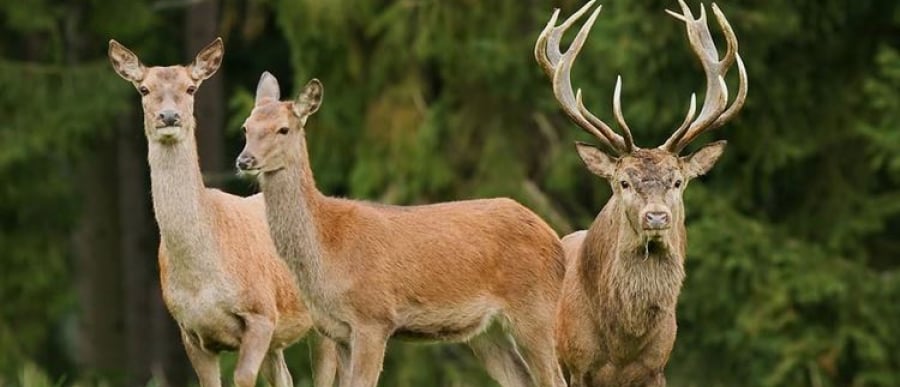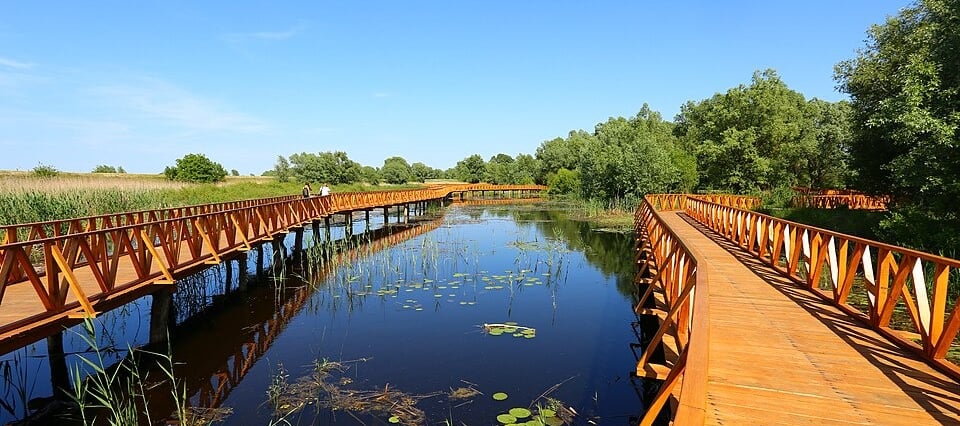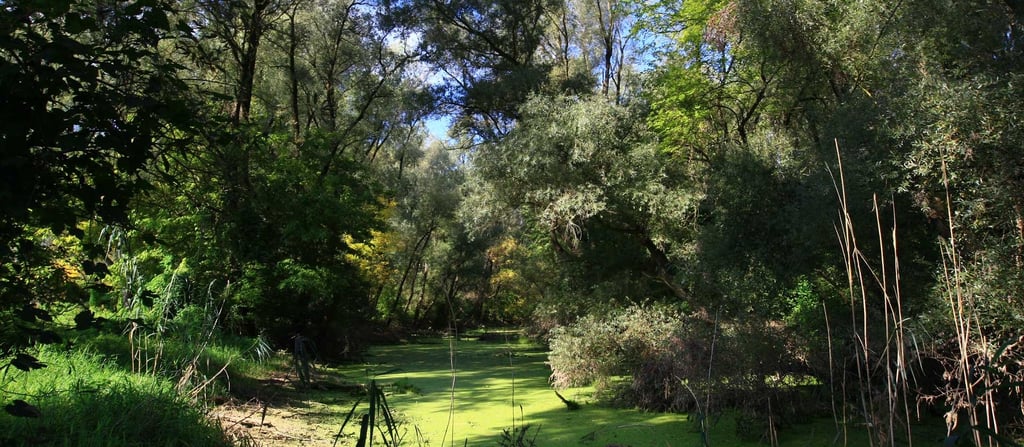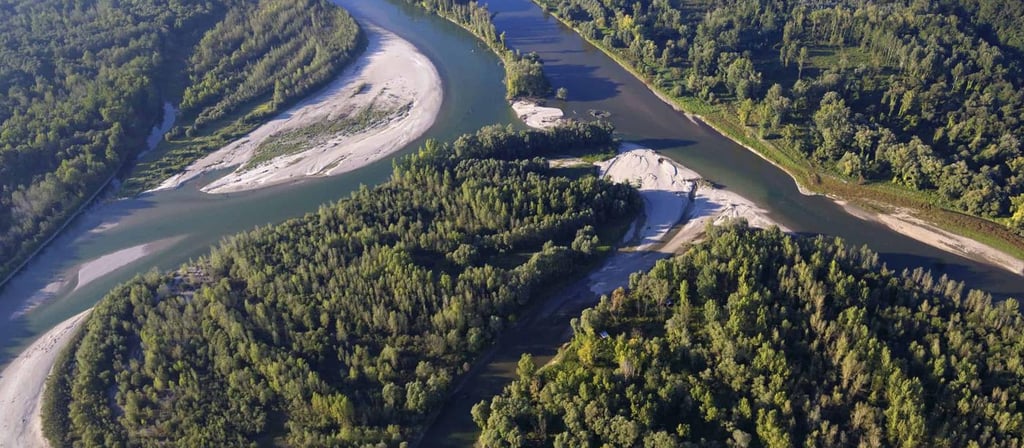Danube–Drava National Park
A vibrant mosaic of floodplains, wetlands, forests, and riverine life where Hungary’s largest protected area thrives with diversity, tradition, and natural wonder.


The Confluence of Rivers and Life: Introduction to the Park
Situated in southern Hungary, Danube–Drava National Park spans over 490 square kilometers of floodplain habitat, merging two great rivers into a tapestry of wetlands, forests, meadows, oxbow lakes, and agricultural land. Established in 1996, this park embodies the dynamic interaction of water, wildlife, and human stewardship. During spring floods, the park’s waterways overflow, turning former farmland into vast, nutrient-rich floodplains that support thriving fish populations, aquatic insects, and migratory birds. The park houses nearly 2,000 protected plant and animal species, from European otters slipping through flood channels to imperial eagles nesting in lone poplars. Every habitat—from alder carr forests to soft grass meadows—tells a story of seasonal rhythm and ecological interdependence. Unlike static reserves, Danube–Drava is a living system where water pulses shape land, and both support traditional livelihoods, ecological research, and immersive visitor engagement. With over 200 kilometers of riverbank, it offers deep insight into how extensive floodplain adds value as both wildlife refuge and heritage landscape in Hungary’s southern valley.
This region is more than ecological wealth—it is a demonstration of sustainable cohabitation between people and river landscapes. Villages such as Kisharsány and Bóly base seasonal livelihoods on fishing, reed harvesting, wild herb gathering, and local produce markets. Local nurseries protect rare floodplain trees like the white willow and water alder, using them in sustainable riverbank planting. Conservation efforts include managed grazing for meadow maintenance, sand spit restoration for colonial-breeding birds, and floodplain mosaic renewal. International research teams monitor bat populations, water quality indicators, bank erosion levels, and fish spawning patterns. The park’s open engagement with science and visitors ensures that its lifeblood—water—is both revered and understood, inviting awareness that this landscape’s vitality hinges on staying flood-poised, not fossilized in time.
Visitor Experience: Trails, Boat Routes, and Renewable Immersion
Visitors can explore Danube–Drava through a variety of modes: guided canoe trips tracing meanders, bike rides following earthen side-dikes, or forest trails that wind through reed beds and bird hide overlooks. Canoeing along seasonal floodwater offers close-up viewing of otters, heron stands, and returning storks. For quieter observation, wooden bird observation towers dot the landscape, offering panoramic views over wet grasslands and reed islands. Trails like the “Fekete Gólya” route lead to nesting sites of black storks built above water. Ranger-led night tours illuminate amphibian choruses, moth gatherings, and bat emergence patterns. Picnic areas near villages showcase floodplain produce—a fresh plumʼs sweetness, herbal teas, or elderberry syrup.
Accommodation options include eco-lodges built from reclaimed flood wood, floating cabins along riverbanks, and family guesthouses in traditional houses with thatched roofs and sun-washed courtyards. Special packages integrate cycling, wildlife observation, canoe campouts, and evening homestays in reed-thatched cabins where guests join local shepherd families or herbalists. For those wanting scientific depth, seasonal bat ringers and ornithologists invite volunteer participation in census weekends. Accessible tourism options include boardwalk observation areas suitable for wheelchairs. With each mode of engagement, the visitor becomes part of the landscape’s rhythm—not simply witness, but temporary inhabitant tuned to its pulse.
Conservation Strategy and Scientific Integrity
Management of Danube–Drava National Park is anchored in a philosophy of hydrodynamic stewardship: allowing flood pulses to reshape gravel banks, feed wetlands, and build habitat. Restoration hotspots include abandoned farmland transformed into oxbow lakes, riparian tree planting to support nesters, and meadows revitalized through grazing permit allocations. Monitoring extends to macroinvertebrate sampling, floodplain fish telemetry, and satellite imagery tracking of breeding habitats. Park researchers also study climate adaptation, mapping species’ phenology responses to shifting flood regimes—particularly for amphibians and migratory birds. Interactions with Hungarian and Croatian park authorities enable cross-border corridors for species like otters and white storks.
Community contributions serve as co-stewards. Local farmers manage grazing zones, fishermen host tours, and environmental tutors accompany school groups. Together, they help maintain piers, signage, and resets of pathways. Water quality stations installed with citizen sensors track pH and turbidity for educational use. Visitor centers offer bilingual interpretive materials, open-access guides, and canoe launch advisories. Tours feature no-drift zones with minimal boat speed to preserve fish spawning. Resulting model demonstrates that river ecosystems prosper where flood dynamics, human heritage, and scientific insight coexist under cooperative guardianship.
Practical Information
Danube–Drava National Park is located near the villages of Drávatamási and Mohács, approximately 230 km south of Budapest. Access via rail to Mohács Station or by car from M6 highway. Visitor centers in Mohács and Kisharsány offer maps, canoe or bike rentals, permitted fishing info, and guided tour bookings. The park is open year-round; guided canoe trips run from spring to autumn, while winter visitor centers operate weekends. There is no entrance fee for general access, though specialized programs—cave tours, floodplain tours, boardwalk crossings—require booking (generally 2,500–5,000 HUF). Rental equipment and guided services typically cost 5,000–12,000 HUF per day. Trails are marked; sturdy footwear and insect repellent recommended. Dog entry is permitted on leash; fishing requires a regional permit. Restrooms, picnic spots, and RVA accessibility are available at visitor centers and eco-lodges. Public transport schedules vary seasonally; shuttle services arranged during high season. Seasonal floods may alter trail access; park website provides live update notices for safe planning.
Official Links
Find maps, trail guides, canoe booking, wildlife updates, and educational schedules at:
https://ddnp.hu/
Follow real-time bird migration, floodplain photo stories, and park events:
Instagram: @danudedrahanp
Facebook: Duna‑Dráva Nemzeti Park Igazgatóság (Danube–Drava National Park Directorate)


Habitat Richness: Rivers, Floodplains, and Forested Islands
The park is defined by shifting waterways and diverse habitat zones. The Drava River, still navigable during high water, meanders through open plains, forming oxbow lakes that ebb and flow with seasonal fluctuations. These oxbows host amphibians, waterfowl, and frog spawning sites—all visible from walking trails or canoe paths. In spring, wild tulip and iris bloom along embanked meadows, while cattle grazing helps maintain short grass that fosters ground-nesting birds like lapwing and corncrake. The Danube side, closer to Hungary's border with Croatia, supports dense alderwoods, sandy shorelines favored by storks and herons, and rare wet grassland orchids. Between these river zones, gravel deposits and sandy ridges support relict dry grassland ecosystems—offering refuge to rare butterflies and steppe flora.
Embedded within these landscapes are forested islets where Summer landscapes host ancient pedunculate oaks and riparian elm stands, offering nesting habitat for goshawks, owls, and woodpeckers. Bat species roost in old trees; beavers build dams across narrower tributaries, shaping micro-habitat pools. The park’s flood management acknowledges these natural dynamics: retaining flood pulses to rebuild habitat rather than turning rivers into locked corridors. As a result, the riverine ecosystem heals itself; sediment builds; vegetation regenerates. Birdwatchers may traverse observation towers to see stork nests in vulnerable early light, while fish ecologists monitor spawning cycles in marked tributaries. This harmonious interplay positions the park as a living laboratory for floodplain ecosystem resilience and heritage species recovery.
Cultural Interwoven: Villages, Traditions, and River Stories
Human presence in Danube–Drava dates back centuries, with seasonal fishing shifting into sedge and reed craft, folk terracotta kiln sites, and seasonal festivals such as March’s “River Awakening.” Traditional pearli village inns (csárda) serve fish soups made from pike, catfish, and perch—subject to seasonal quotas that reflect sustainable harvest. Once a year, villages gather floodplain harvesters for “Herb Korso” processions, honoring water mint and elderflower pickers who bring yield into local kitchens. Ornamental wicker baskets, reed hats, and fish nets are still handwoven by master artisans, often sold at weekend river markets. Music emerges from old folk tunes—songs that reference moonlit floods or otter sightings—accompanied by storytelling sharing cautionary lore about river shifts and observed fish behavior. The regional wine cellars near Villány and Szekszárd sell bordeaux-style reds, often paired with smoked wild fish at riverside taverns—semantic pairings grounded in terroir.
Emerging eco-villages close to the park operate as conservation lodges, offering guided nightwalks, canoe rentals, and local educational programs focusing on floodplain dynamics or sustainable forestry. Schools bring classes to cross-cultural camps where Hungarian and Croatian students learn water management history, endangered river-dependent species, and traditional floodplain farming. Some villages still host water festivals where locals race whaleboats or crown a “Water Saint” for seasonal blessing. All of these immersive experiences help frame the park not just as a protected habitat, but as a space where river stories, livelihood continuity, and community stewardship are lived and renewed annually.






Awarded with the Highest Distinction
Danube–Drava National Park received the Grand Distinction for its extraordinary blend of seasonal floodplain ecology, river heritage culture, biodiversity richness, and community-guided stewardship. It stands as a worthy destination not only for its gravel-sculpted riverscapes and bird chorus dawns, but for offering visitors a resonant experience where river, tradition, and habitat flow in tandem across southern Hungary’s living landscape.






